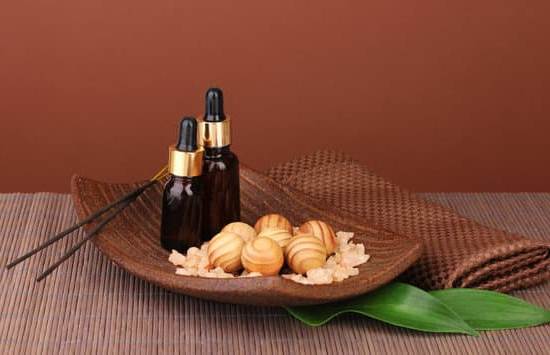Aromatherapy has become increasingly popular for its ability to promote relaxation, reduce stress, and enhance overall well-being. Essential oils are the cornerstone of aromatherapy, each offering its own unique properties and benefits.
In this article, we will explore the potential of mixing three popular essential oils-cinnamon, rosemary, and lavender-for a holistic aromatherapy experience. The question “can you mix cinnamon rosemary and lavender for aromatherapy” is a common one, and we will delve into the answer by examining the individual benefits of each oil and how they can work together to create a harmonious blend.
Cinnamon essential oil is known for its warm and spicy aroma, as well as its various therapeutic properties. From boosting mood to improving circulation, cinnamon essential oil offers numerous benefits that make it a valuable addition to aromatherapy blends.
Similarly, rosemary essential oil boasts stimulating and revitalizing qualities, making it an ideal choice for enhancing mental clarity and focus during aromatherapy sessions. Finally, lavender essential oil is celebrated for its calming effects on the mind and body, making it a popular choice for promoting relaxation and reducing anxiety.
By combining these three essential oils together in specific ratios, individuals can create their own customized aromatherapy blend tailored to their needs. Whether through diffusing the blend in an essential oil diffuser or incorporating it into massage oils or bath soaks, there are various ways to experience the benefits of this unique combination. Additionally, we will provide precautions and considerations when using these essential oils to ensure a safe and enjoyable aromatherapy experience.
As we delve into the details of each essential oil and their potential for synergistic effects when combined, readers will gain insight into creating their own personalized aromatherapy recipes using cinnamon, rosemary, and lavender essential oils. This article aims to empower individuals to explore the world of aromatherapy while reaping the benefits of these natural remedies.
Understanding Cinnamon Essential Oil
Cinnamon essential oil is derived from the bark and leaves of the cinnamon tree, and it is known for its warm, spicy scent. In addition to its pleasant fragrance, cinnamon essential oil has a variety of therapeutic properties that make it a valuable addition to aromatherapy blends. This essential oil is widely recognized for its antimicrobial and antioxidant properties, which can help boost the immune system and protect against environmental pathogens.
In aromatherapy, cinnamon essential oil is often used to create a sense of warmth and comfort. It can also help alleviate symptoms of stress and fatigue, making it an excellent choice for relaxation and mental well-being. When combined with other essential oils like rosemary and lavender, cinnamon essential oil can contribute to a unique aromatherapy experience that promotes both physical and emotional health.
When using cinnamon essential oil for aromatherapy, it’s important to dilute it properly to avoid skin irritation or sensitization. A common recommendation is to use no more than 1% concentration of cinnamon essential oil in a carrier oil or other base product. This ensures that the potency of the oil is balanced while still providing its therapeutic benefits.
| Therapeutic Properties | Benefits |
|---|---|
| Antimicrobial | Boosts immune system |
| Antioxidant | Protects against environmental pathogens |
| Relaxation | Aids in stress relief and mental well-being |
Exploring Rosemary Essential Oil
Rosemary essential oil is derived from the aromatic herb Rosmarinus officinalis, and it has a long history of traditional and medicinal uses. This essential oil is known for its refreshing, herbal aroma and a variety of therapeutic properties that make it a popular choice for aromatherapy.
Rosemary essential oil contains powerful compounds such as camphor, 1,8-cineole, and alpha-pinene, which contribute to its analgesic, anti-inflammatory, and stimulating effects. These properties make rosemary oil beneficial for relieving muscle pain, improving mental clarity and focus, and supporting respiratory health. Additionally, rosemary essential oil can be used to promote hair growth and improve scalp health when diluted in carrier oils or added to hair care products.
### Complementing Other Essential Oils in Aromatherapy Blends.
When it comes to blending essential oils for aromatherapy purposes, rosemary oil is versatile and complements many other oils well. Its herbal scent pairs nicely with citrus oils like lemon or grapefruit for an energizing blend. In the case of creating a relaxing blend with lavender and cinnamon essential oils, the addition of rosemary can add a touch of invigorating freshness to the overall aroma.
As with any essential oil, it’s important to use rosemary oil responsibly according to proper dilution guidelines and safety precautions. When combined thoughtfully with other oils like lavender and cinnamon for aromatherapy purposes, rosemary essential oil can contribute to a harmonious blend that offers both therapeutic benefits and an appealing fragrance experience.
The Benefits of Lavender Essential Oil
Lavender essential oil is one of the most popular and versatile essential oils used in aromatherapy. It is renowned for its calming and soothing properties, making it a favorite choice for relaxation and stress relief. Lavender essential oil has been used for centuries to promote a sense of tranquility and well-being, making it an ideal addition to any aromatherapy blend.
The benefits of lavender essential oil extend beyond its calming effects. This gentle oil also possesses anti-inflammatory, antimicrobial, and analgesic properties, making it useful for alleviating headaches, muscle aches, and minor skin irritations. When used in aromatherapy, lavender essential oil can help create a peaceful atmosphere that promotes relaxation and better sleep.
When combined with other essential oils like cinnamon and rosemary, lavender essential oil can further enhance the overall aromatherapy experience. The sweet, floral aroma of lavender complements the warm and spicy notes of cinnamon, as well as the herbaceous scent of rosemary. This combination creates a multi-dimensional fragrance that can provide both physical and emotional benefits during aromatherapy sessions.
Whether used individually or in combination with other essential oils, including lavender in your aromatherapy practice can promote a sense of balance and harmony. With its versatile nature and numerous therapeutic properties, lavender essential oil is a valuable addition to any aromatherapy collection. Whether diffused, applied topically, or added to bath salts or massage oils, lavender makes a wonderful ingredient for creating personalized aromatherapy blends that cater to various wellness needs.
Mixing Cinnamon, Rosemary, and Lavender for Aromatherapy
Aromatherapy enthusiasts are often curious about the possibility of blending different essential oils to create unique and effective aromatherapy experiences. The combination of cinnamon, rosemary, and lavender essential oils presents an exciting opportunity to explore a rich and diverse blend that can provide numerous benefits for relaxation and wellness.
Benefits of Cinnamon Essential Oil
Cinnamon essential oil is known for its warm, spicy aroma that evokes feelings of comfort and relaxation. In aromatherapy, this oil is prized for its potential to promote emotional well-being and reduce feelings of stress and anxiety. Additionally, cinnamon essential oil has antimicrobial properties that can support overall health when diffused into the air or used in topical applications with proper dilution.
Exploring the Therapeutic Properties of Rosemary Essential Oil
Rosemary essential oil is revered for its invigorating scent and numerous therapeutic benefits. This versatile oil has been traditionally used to improve mental clarity and concentration, making it an excellent complement to other essential oils in aromatherapy blends. Furthermore, rosemary essential oil can also alleviate feelings of fatigue and promote a sense of vitality when used in aromatherapy practices.
The Soothing Effects of Lavender Essential Oil
Lavender essential oil is celebrated for its gentle floral fragrance and powerful calming properties. When incorporated into aromatherapy blends, lavender essential oil can help reduce nervous tension, support relaxation, and promote restful sleep. Its versatile nature makes it an ideal addition to the combination of cinnamon and rosemary essential oils for a comprehensive aromatherapy experience.
By combining these three distinct essential oils, individuals can create a harmonious aromatherapy blend that harnesses the unique properties of each oil to promote overall well-being. Experimenting with different ratios and methods for blending cinnamon, rosemary, and lavender essential oils allows individuals to tailor their aromatherapy experience according to their preferences and needs.
Whether using this blend in bath soaks, massage oils, or diffusion practices, the possibilities are endless when exploring the potential benefits of mixing these essential oils for aromatherapy purposes.
Aromatherapy Recipes and Uses
When it comes to creating aromatherapy blends, the possibilities are endless. Mixing essential oils allows you to create unique scents and therapeutic combinations tailored to your specific needs. Using a combination of cinnamon, rosemary, and lavender essential oils can result in a delightful aroma with a wide range of benefits for relaxation and wellness. Here are some aromatherapy recipes and uses that incorporate these essential oils:
- Cinnamon Rosemary Lavender Diffusion: Combine 3 drops of cinnamon essential oil, 2 drops of rosemary essential oil, and 5 drops of lavender essential oil in a diffuser with water. Allow the soothing aroma to fill the air for a calming effect.
- Lavender Rosemary Cinnamon Massage Oil: Mix 5 drops of lavender essential oil, 4 drops of rosemary essential oil, and 2 drops of cinnamon essential oil with a carrier oil such as sweet almond or jojoba. Use this blend for a relaxing massage to ease tension and promote relaxation.
Using these essential oils in various forms can provide an array of benefits for both the mind and body. Whether you choose to diffuse the oils in the air, dilute them in a carrier oil for massage, or add them to bath soaks, experimenting with different methods can help you discover which application works best for you.
It’s important to remember that while these essential oils offer numerous benefits, it’s crucial to use them responsibly. Always perform a patch test before using any new blend on your skin, especially if you have sensitive skin or underlying health conditions. Additionally, consult with a healthcare professional if you have any concerns about using these oils, especially if you are pregnant or nursing.
By incorporating cinnamon, rosemary, and lavender into your aromatherapy routine, you can experience the combined benefits of their unique properties while enjoying their pleasant fragrance. Embracing the art of blending these essential oils gives you the opportunity to customize your own aromatherapy experience for ultimate relaxation and well-being.
Precautions and Considerations
When it comes to using essential oils for aromatherapy, it’s important to exercise caution and consider potential sensitivities or interactions that could arise. While combining cinnamon, rosemary, and lavender essential oils can create a beautifully aromatic blend, there are some precautions and considerations to keep in mind for a safe and effective experience.
Here are some important reminders and safety tips when using essential oils for aromatherapy:
- Always dilute essential oils: Essential oils are highly concentrated and should always be diluted before applying them to the skin. Whether you’re creating a massage oil, bath soak, or using the blend in a diffuser, make sure to dilute the essential oils properly for safe use.
- Perform a patch test: Before using any new essential oil or blend on your skin, it’s wise to perform a patch test to check for any allergic reactions or sensitivities. Apply a small amount of the diluted blend to your inner arm and wait 24 hours to see if any irritation occurs.
- Consult with a healthcare professional: If you have any underlying health conditions, are pregnant, breastfeeding, or taking medications, it’s advisable to consult with a healthcare professional before using essential oils for aromatherapy. Some individuals may have specific contraindications with certain essential oils.
- Keep out of reach of children and pets: Essential oils should always be stored securely and out of reach of children and pets. Ingestion or misuse of essential oils can lead to serious health issues.
When considering the combination of cinnamon, rosemary, and lavender essential oils for aromatherapy, it’s crucial to be mindful of these precautions in order to have a safe and enjoyable experience. Additionally, if you notice any adverse reactions while using the blend, discontinue use immediately and seek medical advice if necessary. Taking these precautions can help ensure that you can fully enjoy the benefits of this unique aromatherapy combination.
Final Thoughts
In conclusion, the combination of cinnamon, rosemary, and lavender for aromatherapy can create a unique and therapeutic experience. Each essential oil offers its own distinct benefits, and when blended together, they can enhance relaxation, promote wellness, and provide a soothing atmosphere.
While cinnamon essential oil contributes warmth and spice, rosemary essential oil adds a refreshing and invigorating element, and lavender essential oil brings calming properties to the blend. When used in the right proportions and with careful consideration, these oils can work harmoniously to create a balanced aromatherapy experience.
It’s important for individuals to explore and experiment with different essential oil blends to find what works best for their specific needs and preferences. The potential benefits of using a combination of cinnamon, rosemary, and lavender for aromatherapy are vast, from reducing stress and anxiety to promoting mental clarity and focus. Whether through diffusion, massage oils, or bath soaks, there are numerous ways to incorporate this particular essential oil blend into daily self-care routines.
As with any use of essential oils for aromatherapy purposes, it’s crucial to be mindful of safety precautions and potential sensitivities. It’s recommended that individuals conduct patch tests before using any new blend of essential oils on their skin or in their living space.
Additionally, seeking guidance from a qualified aromatherapist or healthcare professional can provide valuable insight into the proper use of these oils. Overall, by understanding the properties and benefits of each individual oil-cinnamon, rosemary, and lavender-their potential synergistic effects in an aromatherapy blend can be both therapeutic and rewarding.
Frequently Asked Questions
Can I Use Rosemary and Lavender Essential Oil Together?
Yes, you can use rosemary and lavender essential oil together. They complement each other well and create a soothing and refreshing aroma when blended. It’s a popular combination in aromatherapy and home fragrance products.
Do Cinnamon and Lavender Smell Good Together?
Cinnamon and lavender can indeed smell good together. The warm, spicy scent of cinnamon can be nicely balanced by the floral, herbaceous notes of lavender. This combination works well in fall and winter blends for a cozy, comforting aroma.
Which Essential Oils Should Not Be Mixed?
There are some essential oils that should not be mixed due to potential negative reactions or diminishing effectiveness. For example, citrus oils like lemon or bergamot should not be combined with sun exposure as they can cause skin sensitivity.
Additionally, oils high in phenols like oregano or thyme may irritate the skin if not properly diluted. It’s important to research and consult with a certified aromatherapist before blending certain essential oils together to ensure safety and efficacy.

Are you looking for a natural way to improve your health and wellbeing?
If so, aromatherapy may be the answer for you.





